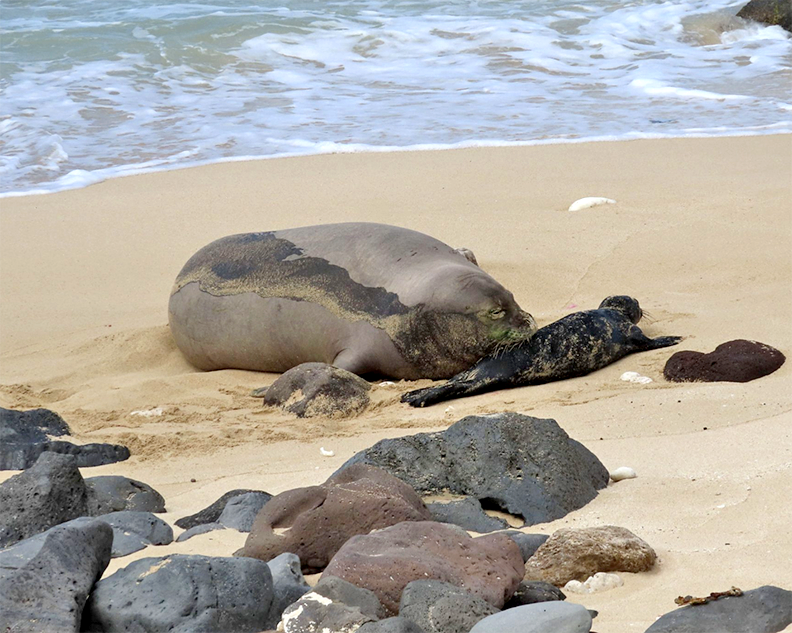 By Léo Azambuja
By Léo Azambuja
My mother has always told us, “You’ve got to be afraid of the living, not the dead.” It didn’t work much. While growing up, my siblings and I were still terrified of ghosts.
I wish I could say as a grown-up I have shed that fear. But there is always that humbling moment. One of those moments happened a few years ago while spending the night in one of the most beautiful yet eerie places I have ever visited.
Ten years ago, I moved to Molokai and lived there for about a year, working in the local newspaper. I lived a couple miles from a lookout overlooking Kalaupapa, a tiny and isolated peninsula at the bottom of a nearly 2,000-foot sheer cliff on Molokai’s north side.
From 1866 to 1969, Hawaiian citizens diagnosed with Hansen’s disease — formerly known as leprosy — were forced to relocate to Kalaupapa, even though there has been a cure for Hansen’s since the 1940s. So for more than 100 years, some 8,500 people lived and died in Kalaupapa, isolated from the rest of the world.
Today you’re not allowed to go into Kalaupapa Town unless you work there or you’re invited. I was fortunate enough to visit the settlement a few times 10 years ago, when there were about 18 patients still living there by choice. I went mostly to report on their community meetings. I usually walked down the steep trail, all of its 20-something switchbacks. Once, the state of Hawai‘i paid for a flight — actually a five-minute leap — from Ho‘olehua Airport, so I could take passport pictures of the patients. At that time, the impending canonization of Father Damien in the Vatican was the talk of the town.
The peninsula is isolated from the “topside” by one the tallest seacliffs in the world. A fine mist often prevents seeing the top of the cliffs. In the middle of the peninsula, an extinct volcano houses a bottomless lake. To the east of Kalaupapa, there are several islands and valleys that once were home to thriving Hawaiian communities. To the west, you can see pristine sandy beaches and world-class waves rolling over the reef. But no one surfs there; it would be disrespectful to the residents. Besides, I believe it’s forbidden and the waters are known to be infested with sharks.
The stunning beauty of Kalaupapa is only matched by beauty of its remaining patients, some of the nicest people I ever met. They are happy to chat, sell baked goods, and interact with everyone. They’re just plain nice, simple people who love their lives.
Kalapapa is an idyllic place. But underneath that layer of beauty, there are signs of suffering everywhere. Innumerable cemeteries, resting places for all those suffering souls, are spread among houses, churches and other buildings. You just can’t help but imagine the suffering, humiliation, isolation that thousands of people went through unwillingly. You just cannot walk away untouched.
In one of those trips, my girlfriend and I befriended a state caretaker, and he invited us to spend a night there. He took us all over the place, and gave us a really good insight of the place; historically, culturally, geographically, religiously and socially.
We spent the night in one the rooms built for the patients’ visiting families. It was an old building; it probably preceded my grandparents’ birth date. A long, skinny building next to the dorms reflected the suffering by the families affected by the disease. Inside the building, there was a table as long as the building, with seats on both sides and separated by a glass barrier. There, families could visit their relatives banned to Kalaupapa, but they were never allowed to touch each other.
We had some fun that night. We brought a couple bottles of wine, and hang out with the caretaker and a vivacious kumu hula who was a transgender. We told stories, played ukulele and sang.
When I went to bed, I was inundated with dreams of people Iʻd never seen before. I woke up in the middle of the night, desperately needing to use the bathroom. I just didn’t want to go alone. Thankfully, my girlfriend was awake, so we waited for each other outside the bathroom. Back in bed, I was tormented by nightmares over and over again.
Perhaps I just let the environment around me influence my thoughts. Perhaps many who lived and died in Kalaupapa were still wandering souls looking for a way to alleviate their suffering.
Regardless, my mother is right. We should fear the living, not the dead. It’s just that sometimes we just can’t help it, as much as I don’t want to admit it.
Discover more from ForKauaiOnline
Subscribe to get the latest posts sent to your email.




Leave a Reply